For birdwatchers seeking the perfect blend of luxury, exclusivity, and extraordinary avian encounters, Botswana’s Okavango Delta is an unrivaled destination. Known as one of Africa’s premier birding hotspots, the Delta offers a unique opportunity to witness rare and diverse bird species in their natural habitat. With Secrets VIP Travel, you’ll experience a tailor-made, all-inclusive birding safari that combines high-end accommodation, expert-led tours, and unparalleled access to the heart of the Delta’s pristine...
🦅 The Big Six Birds of Kruger National Park: A Birder’s Ultimate Safari Guide 🕶️
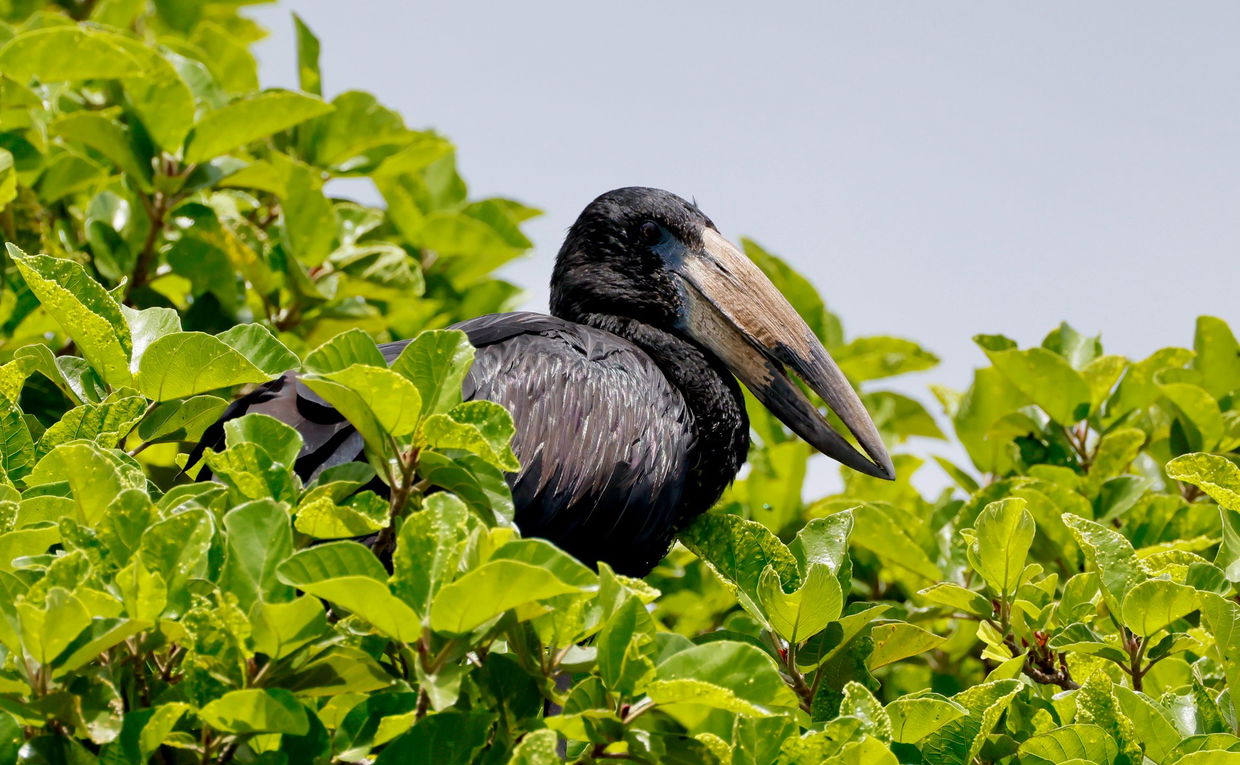
Kruger National Park is renowned as one of Africa's premier wildlife destinations. While most visitors come seeking the legendary Big Five mammals, the park boasts an equally impressive avian population with over 500 recorded species. Among these, six spectacular birds stand out as the "Big Six" - a must-see list for serious birders and casual nature lovers alike.
This Secrets VIP guide provides an in-depth look at these remarkable species, offering:
✔️ Detailed profiles of each Big Six bird
✔️ Prime viewing locations and optimal seasons
✔️ Specialized safari options for bird enthusiasts
✔️ Conservation status and ecological importance
✔️ Photography tips for capturing these magnificent birds
🦜Chapter 1: The Big Six Bird Species
1. Martial Eagle (Polemaetus bellicosus)
The Martial Eagle reigns as Africa's largest eagle with a wingspan reaching 2.6 meters. These powerful predators primarily hunt in open woodlands and savannas, with frequent sightings around Satara and Lower Sabie. Their diet includes monitor lizards, small antelope, and other birds. During the dry season (May-October), when vegetation is sparse and prey more visible, your chances of spotting these magnificent raptors increase significantly.
Identification Tips:
Massive size with broad, rounded wings
Dark brown upperparts with white underparts spotted brown
Distinctive yellow feet and cere
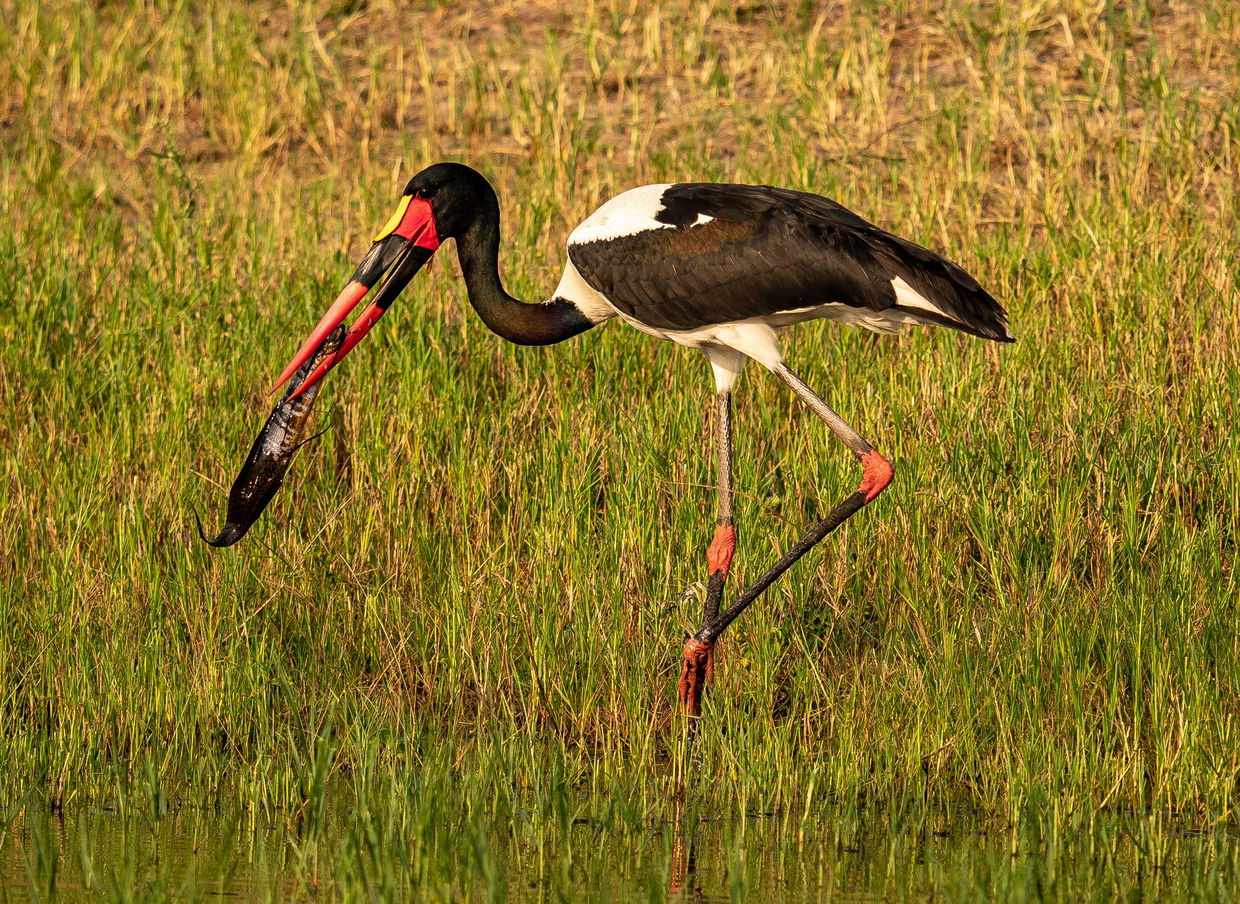
2. Saddle-billed Stork (Ephippiorhynchus senegalensis)
Standing up to 1.5 meters tall, the Saddle-billed Stork is impossible to miss with its striking black-and-white plumage and colorful bill. These wading birds frequent rivers and waterholes throughout Kruger, particularly along the Luvuvhu and Sabie Rivers. The wet season (November-April) brings ideal viewing conditions as they nest in tall trees near water.
Unique Characteristics:
Bright red "saddle" on massive yellow bill
Red legs with distinctive black bands
Loud, clattering bill displays during courtship
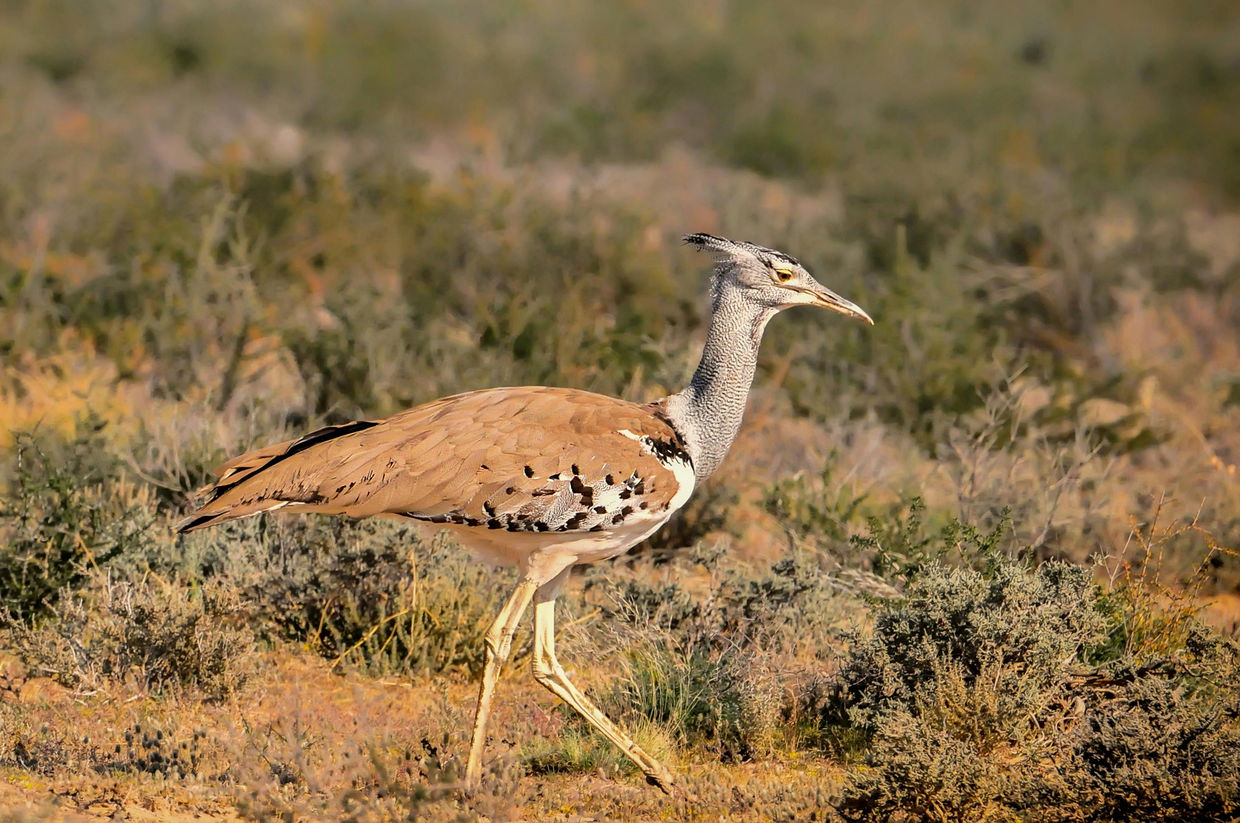
3. Kori Bustard (Ardeotis kori)
As Africa's heaviest flying bird (weighing up to 20kg), the Kori Bustard prefers open grasslands in central Kruger. Early mornings during the breeding season (September-March) offer the best opportunities to witness males performing elaborate courtship displays, puffing up their throat pouches to impressive proportions.
Behavioral Notes:
Omnivorous diet (insects, small reptiles, seeds)
Walks deliberately through grasslands
Males perform dramatic mating dances

4. Pel's Fishing Owl (Scotopelia peli)
The holy grail for many birders, this rare owl inhabits riverine forests along the Luvuvhu River in northern Kruger. Nocturnal by nature, spotting one requires night drives with expert guides. Their deep, booming calls often give away their presence before they're seen.
Identification Features:
Large, orange-brown plumage
Dark barring on underparts
Bare pink toes for gripping fish
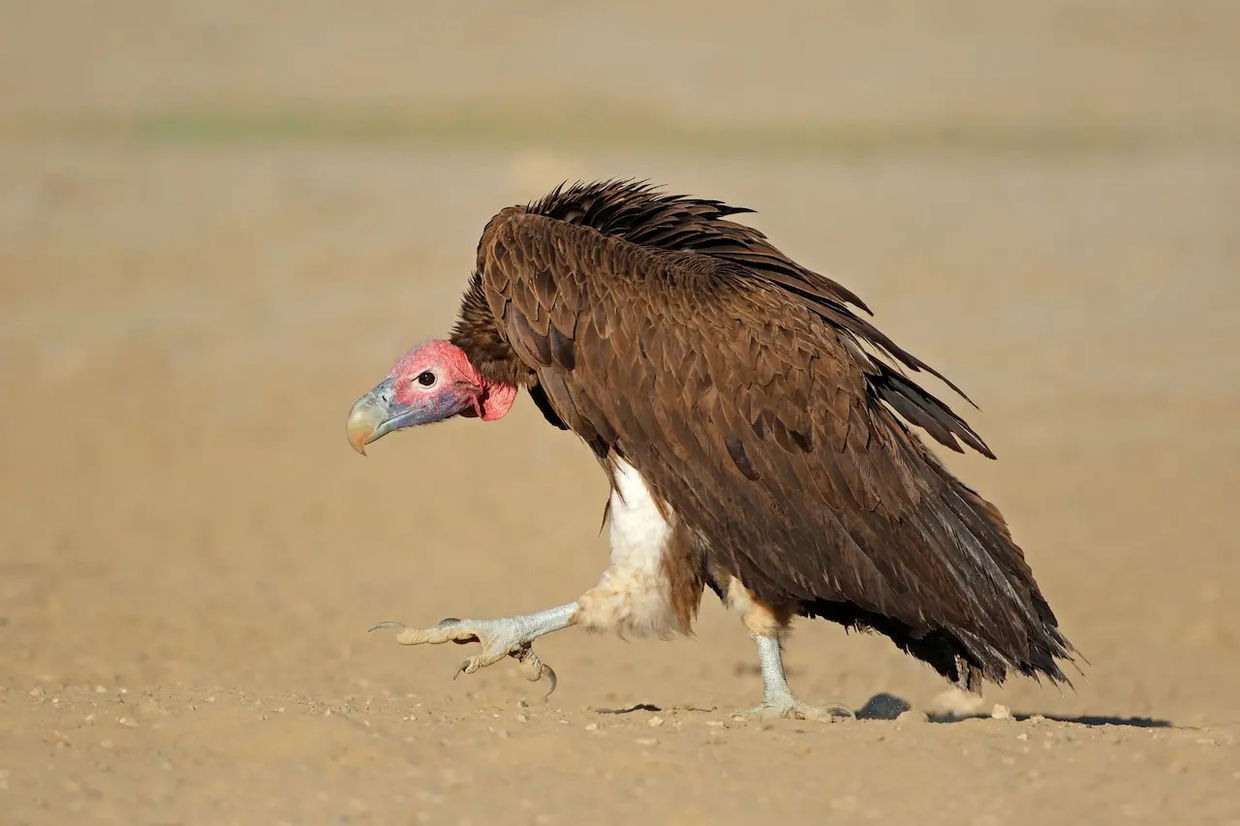
5. Lappet-faced Vulture (Torgos tracheliotos)
The largest vulture in Africa plays a crucial role as nature's cleanup crew. Look for them at lion kills in southern Kruger, where their massive size (wingspan up to 2.9m) dominates other scavengers. The dry season (May-October) offers prime viewing as carcasses become more concentrated near water sources.
Distinctive Traits:
Pink, wrinkled head skin (lappets)
Powerful beak capable of tearing tough hide
Often the last vulture to arrive at kills
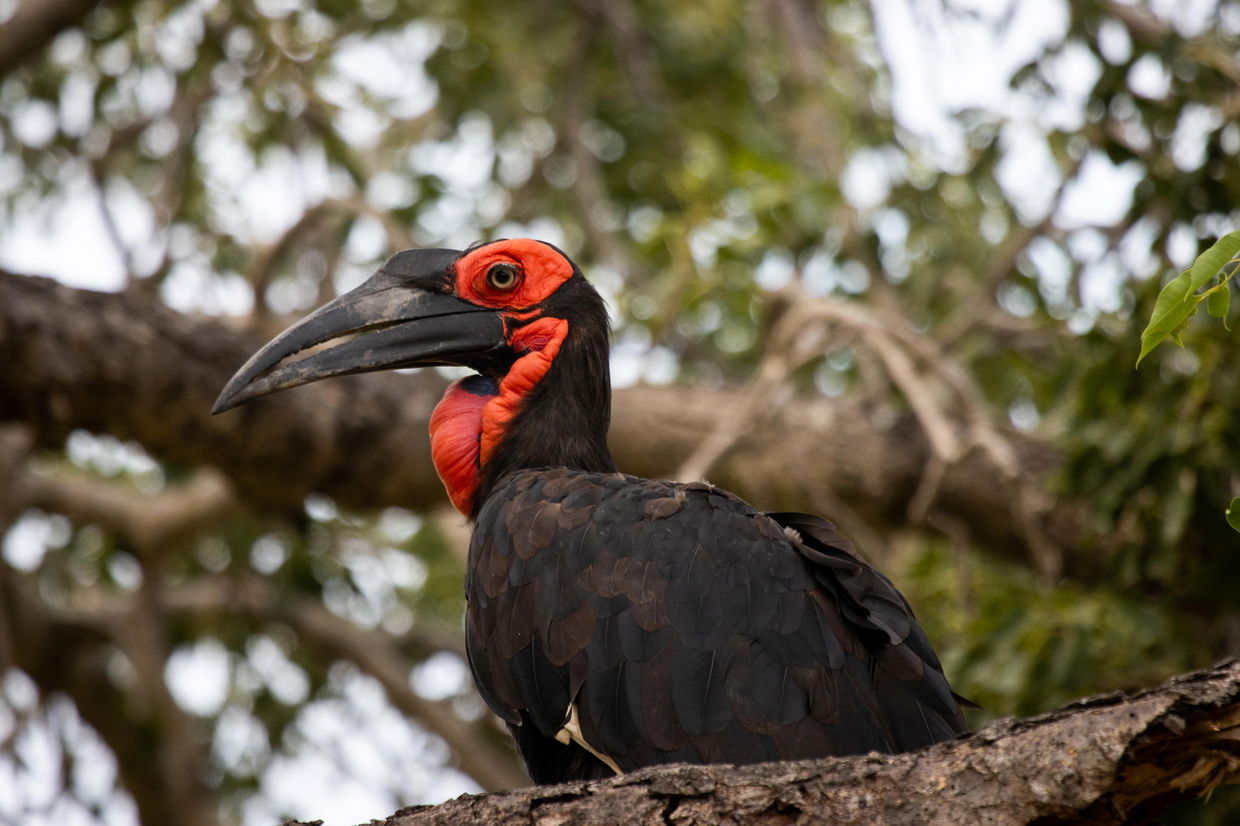
6. Southern Ground Hornbill (Bucorvus leadbeateri)
These endangered giants (standing up to 1.2m tall) roam Kruger's woodlands in small family groups. Their deep booming calls, which carry up to 3km, are a signature sound of the African bush. Breeding pairs maintain territories up to 100 square kilometers.
Conservation Status:
Only about 1,500 remain in South Africa
Slow reproductive rate (one chick every 9 years)
Artificial nests have been introduced to boost populations
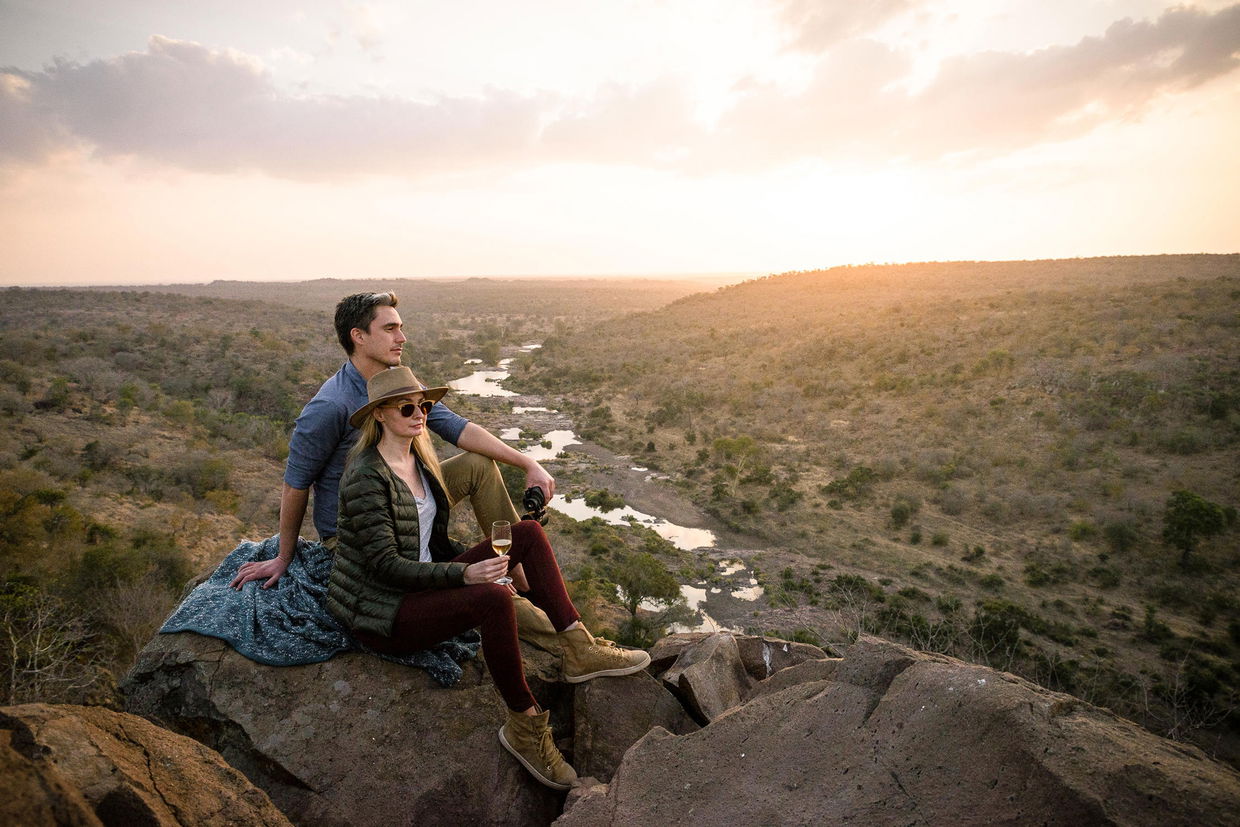
🕵️♂️Chapter 2: Prime Birding Locations in Kruger
Kruger's diverse ecosystems create ideal habitats for different bird species. Understanding where to look significantly improves your chances of spotting the Big Six.
Northern Region (Pafuri/Punda Maria)
The lush riverine forests along the Luvuvhu River form the stronghold for Pel's Fishing Owl. This area also hosts:
✓Bohm's Spinetail
✓Tropical Boubou
✓African Broadbill
Best viewing method: Guided walking safaris along the riverbanks at dusk
Central Region (Satara/Orpen)
The open grasslands around Satara provide perfect hunting grounds for:
✓Martial Eagles
✓Kori Bustards
✓Secretary Birds
Key spots: N'wanetsi River, Sweni Hide
Southern Region (Lower Sabie/Skukuza)
The Sabie River supports:
✓Saddle-billed Storks
✓Giant Kingfishers
✓African Fish Eagles
Best approach: Sunrise drives along the river road (H4-1)
Specialized Birding Areas
🔸Shimuwini Dam: Excellent for waterbirds
🔸Lake Panic Hide: Premier photography spot
🔸Pafuri Picnic Site: Migrant hotspot
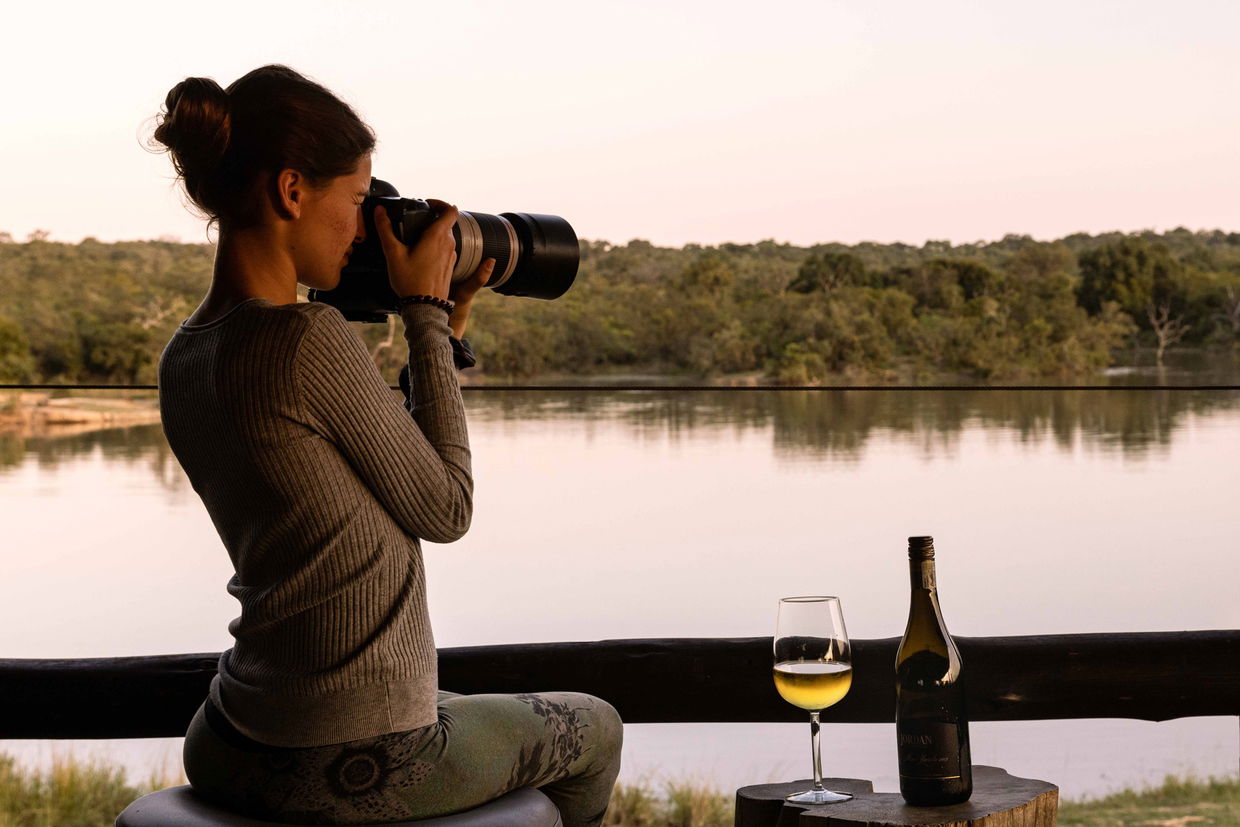
🤔Chapter 3: Planning Your Birding Safari
Optimal Timing
September-November: Best for migrants and breeding displays
December-February: Lush vegetation but challenging photography
May-August: Easier spotting with sparse foliage
Lodge Selection
For serious birders, consider these specialized options:
❖Pafuri Camp (Northern Kruger)
Expert bird guides
Canoe safaris for river species
Pel's Owl tracking experience
❖Singita Lebombo (Eastern Kruger)
Private birding vehicles
Raptor identification workshops
Excellent photographic hides
❖Singita Sweni Lodge (Southern Kruger)
Waterbird-focused drives
Specialist optics available
Early morning walking safaris
Essential Gear
Binoculars (10x42 recommended)
Field guide (Newman's Birds of SA)
Camera with 400mm+ lens
Bird call app (for learning vocalizations)
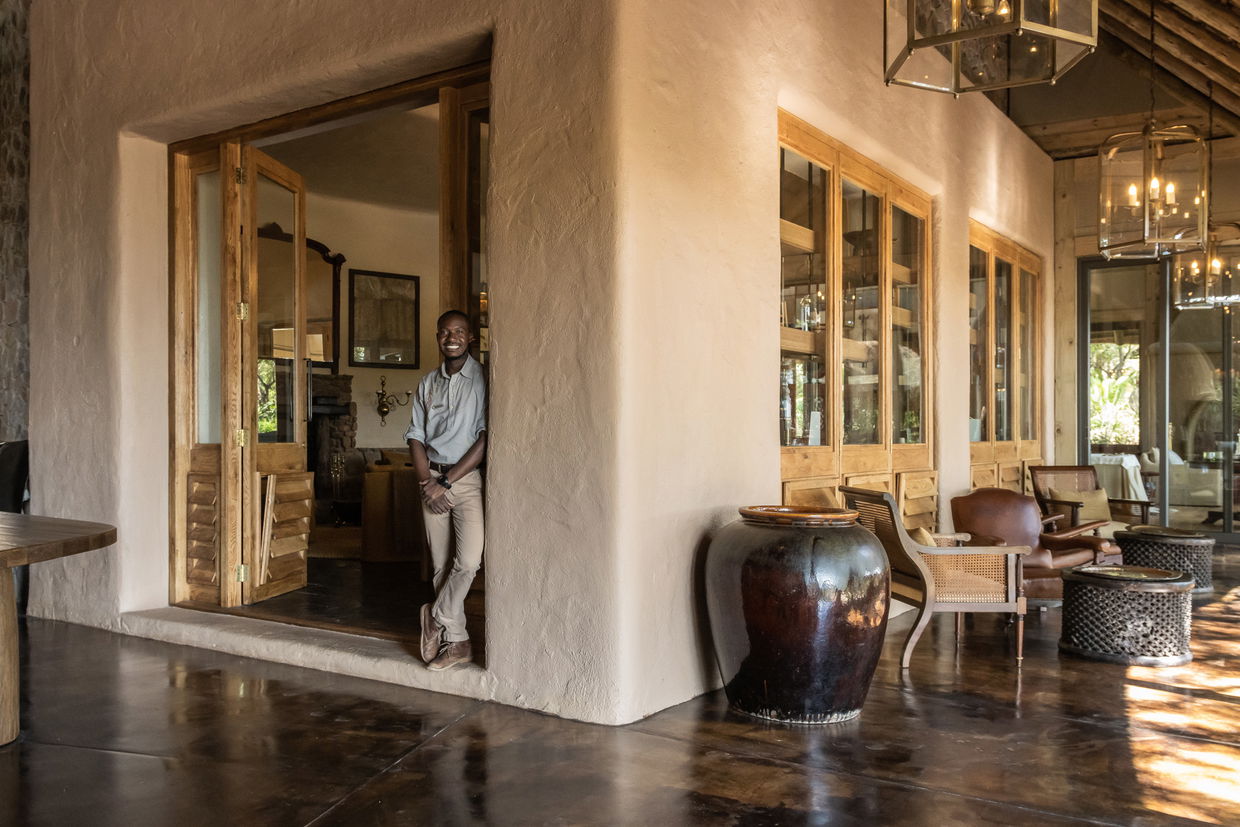
🍃 Chapter 4: Conservation and Ethics
Kruger's bird populations face numerous threats, from habitat loss to power line collisions. Responsible birding practices help protect these species:
1. Ethical Viewing
•Maintain safe distances
•Never use playback calls during breeding season
•Avoid flushing nesting birds
2. Supporting Conservation
Many lodges contribute to:
•Vulture restaurants (supplemental feeding)
•Nest monitoring programs
•Anti-poaching patrols
3. Citizen Science Opportunities
Visitors can participate in:
•Bird atlasing projects
•Rare species reporting
•Habitat restoration initiatives
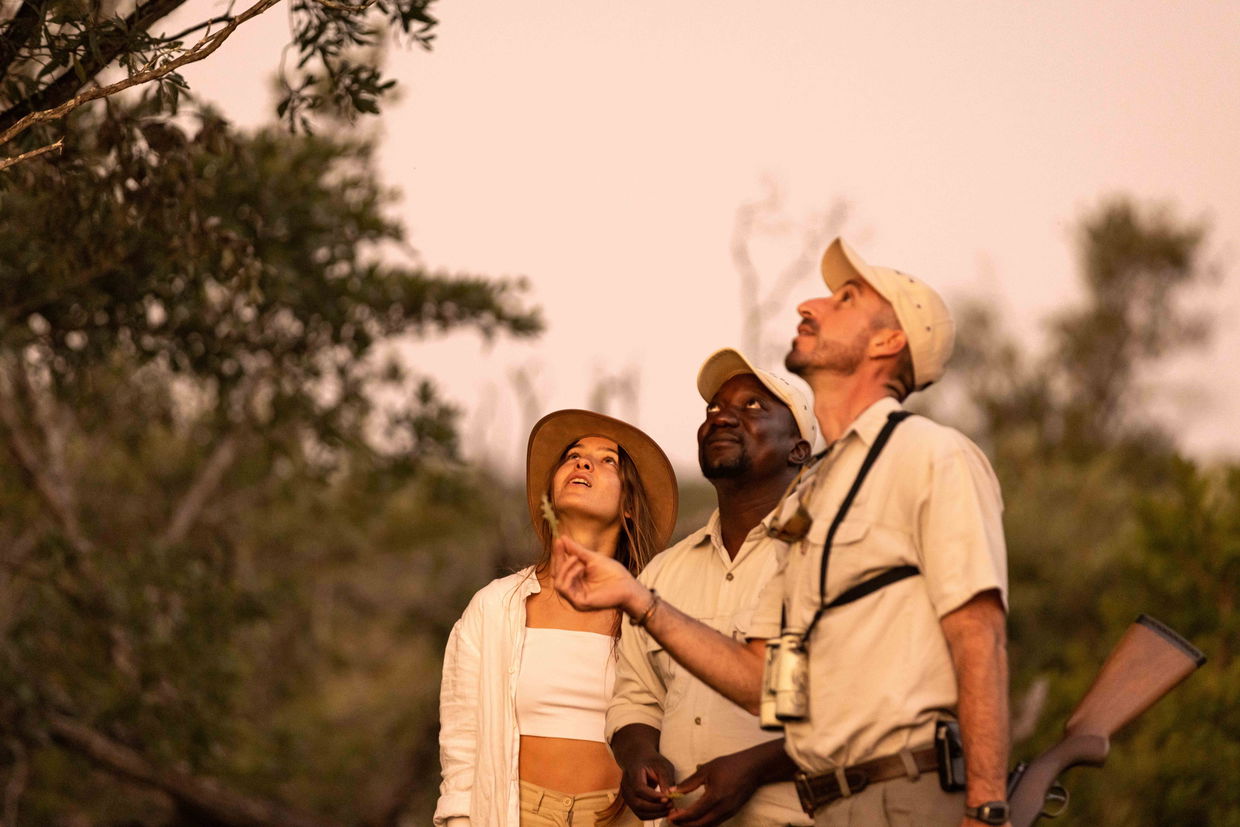
🦩The Ultimate Birding Experience
A birding safari in Kruger National Park offers unparalleled opportunities to encounter Africa's most spectacular avian species. By focusing on the Big Six birds, visitors gain deeper appreciation for the park's incredible biodiversity. Whether you're a dedicated birder or simply appreciate nature's wonders, Kruger's feathered giants will leave you awestruck. With careful planning, expert guidance, and responsible tourism practices, your birding adventure will create memories to last a lifetime while contributing to the conservation of these magnificent species.
📷 #BigSixBirds #KrugerBirding #AfricanBirdSafari #LuxuryBirding #WildlifePhotography
Further Reading
Kruger National Park, one of Africa’s most iconic wildlife reserves, is not only a sanctuary for the majestic rhinoceros but also a premier destination for luxury safaris. However, these ancient giants face severe threats from poaching and habitat loss, making conservation efforts more critical than ever. In this in-depth guide, we’ll explore the challenges of rhino conservation in Kruger National Park, the heroic efforts of rangers and organizations working to protect them,...


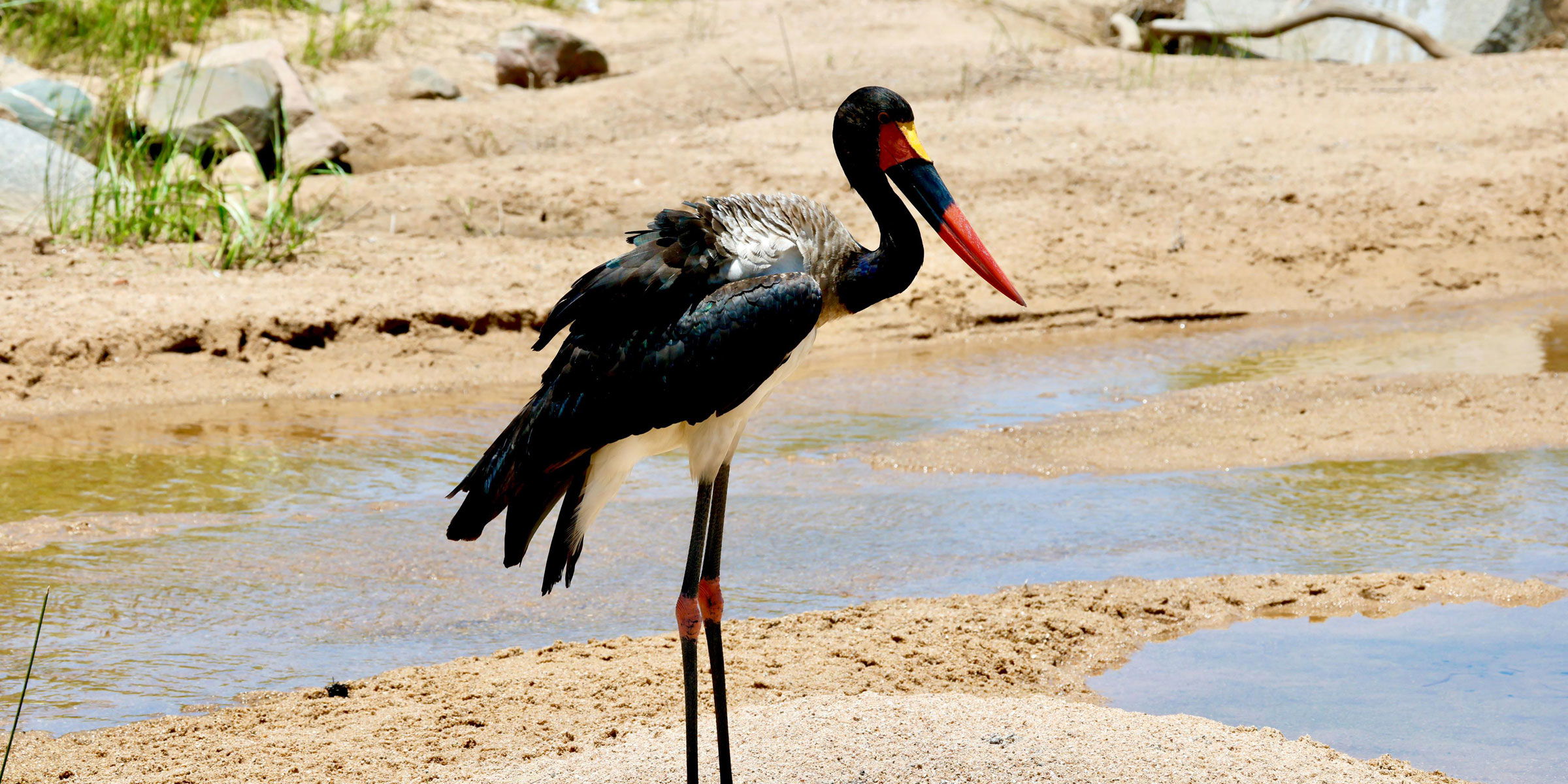
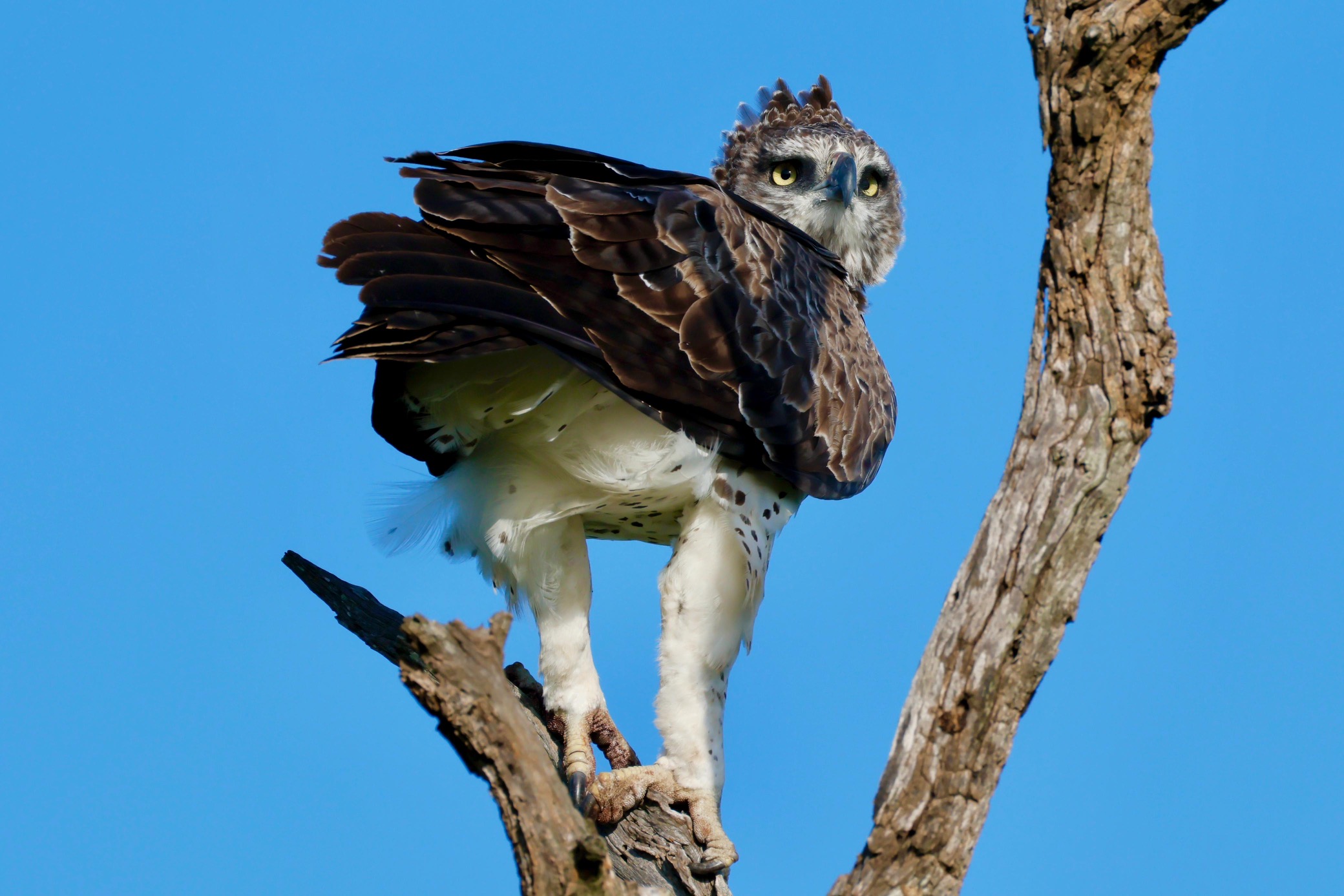
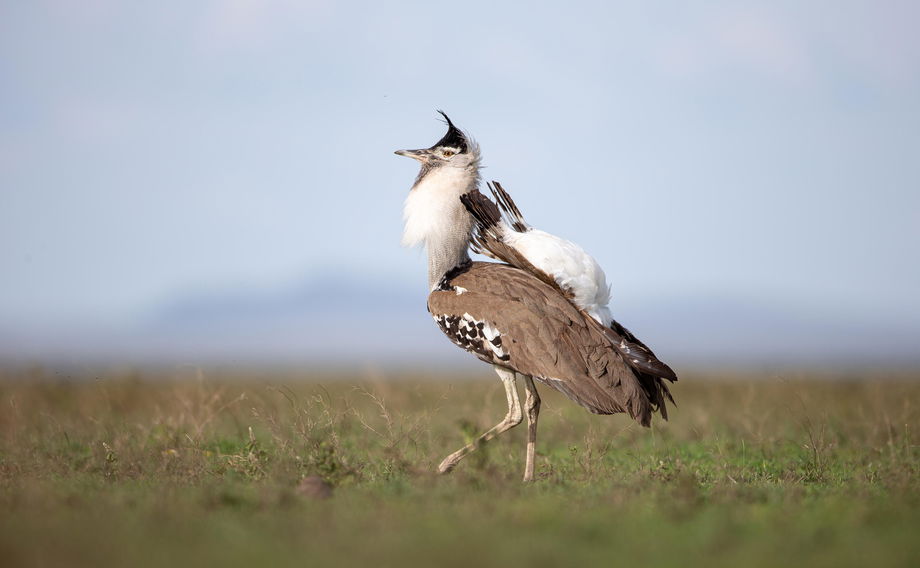
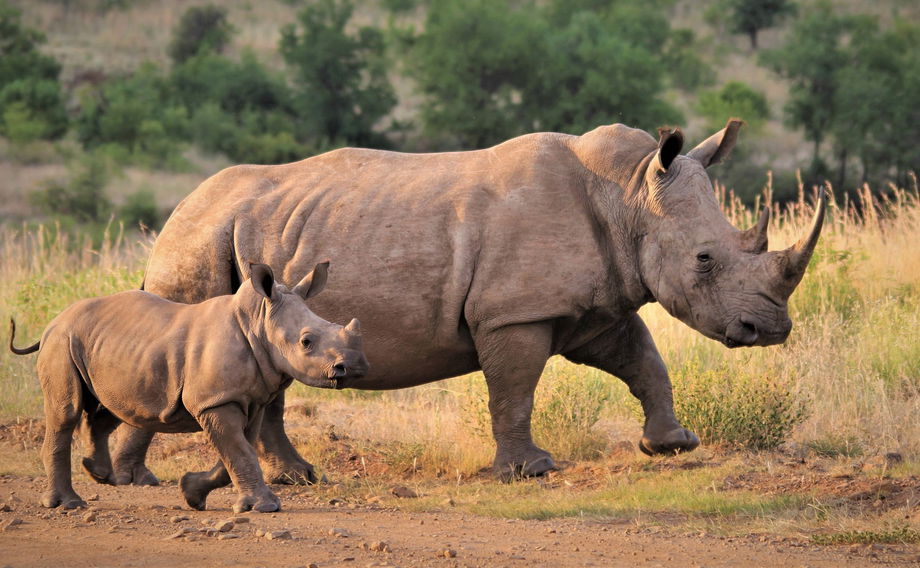
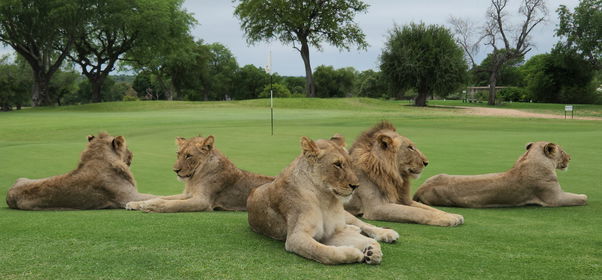
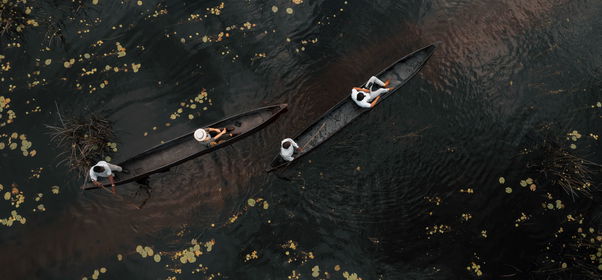
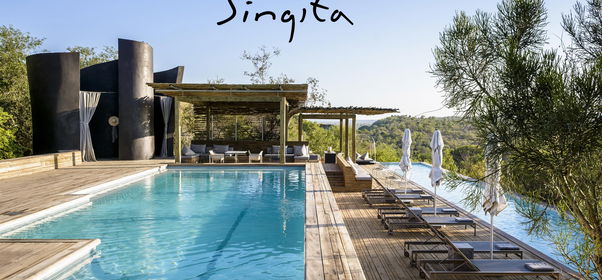
Share This Post